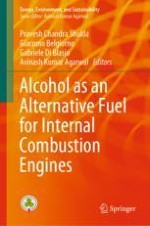This book covers different aspects related to utilization of alcohol fuels in internal combustion (IC) engines with a focus on combustion, performance and emission investigations. The focal point of this book is to present engine combustion, performance and emission characteristics of IC engines fueled by alcohol blended fuels such as methanol, ethanol and butanol. The contents also highlight the importance of alcohol fuel for reducing emission levels. Possibility of alcohol fuels for marine applications has also been discussed. This book is a useful guide for researchers, academics and scientists.
